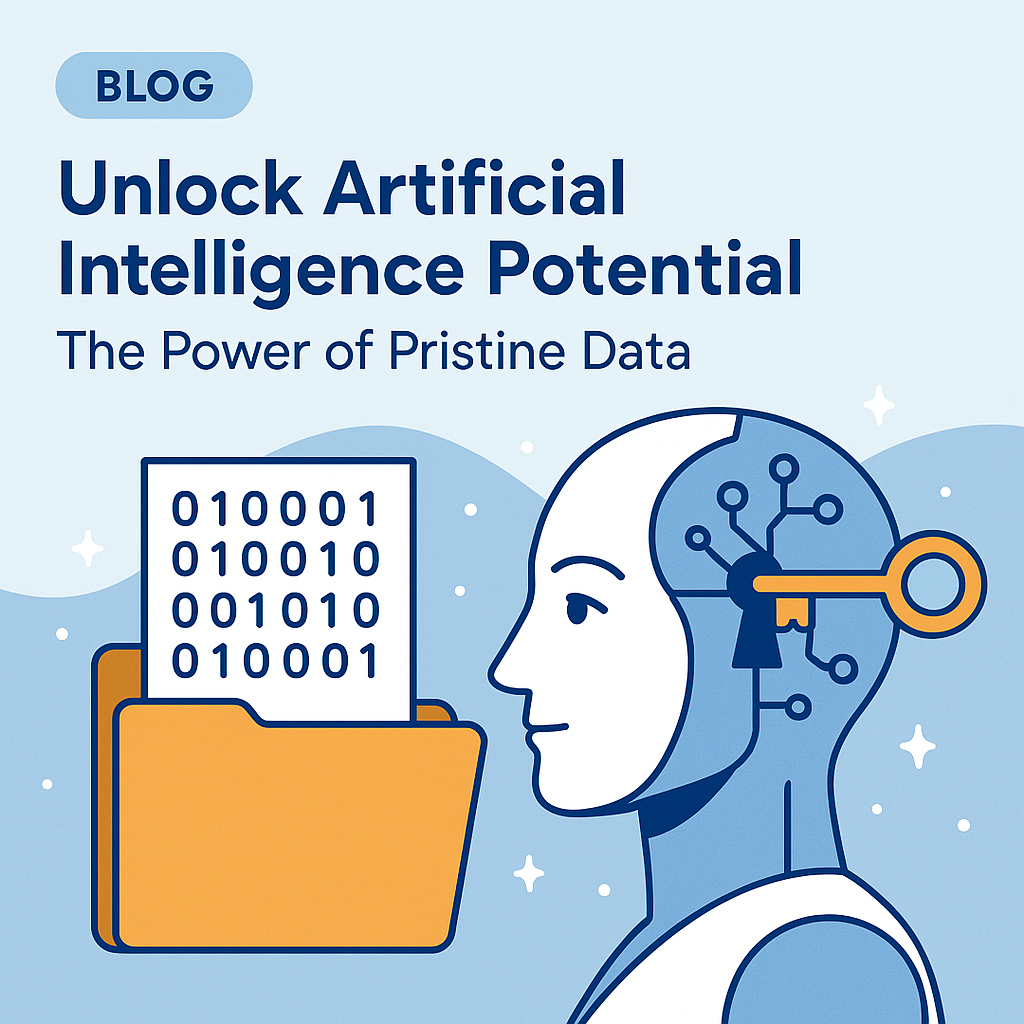Part 8 in the Series: Unlock Artificial Intelligence Potential – The Power Of Pristine Data
The integration of Artificial Intelligence (AI) into cybersecurity has ushered in a new era of sophisticated threat detection, proactive vulnerability assessments, and automated incident response. As organizations increasingly rely on AI to bolster their defenses, the fundamental principle remains that the quality of the data on which they train these advanced systems directly links to their effectiveness. The old saying “garbage in, garbage out” (GIGO) holds true here; navigating the unique data quality challenges in the cybersecurity domain.

In Part 7 we covered some relevant examples where data is used successfully. While the principles of data hygiene and fidelity are universally applicable, the cybersecurity domain presents unique challenges that require specific considerations when preparing data for AI training.
Attacks
One significant challenge is addressing adversarial attacks targeting training data (https://akitra.com/cybersecurity-implications-of-data-poisoning-in-ai-models/). Cybersecurity AI operates in environments where attackers actively try to manipulate training data. This sets it apart from many other AI applications. Some of the forms this can take are:
- Data poisoning: where attackers inject carefully crafted malicious data into training data sets to skew what a given model learns.
- Adversarial attacks: where subtle modifications are made to input data at inference time to fool a model.
Countering these threats requires the implementation of robust data validation and anomaly detection techniques specifically designed to identify and filter out poisoned data (https://www.exabeam.com/explainers/ai-cyber-security/ai-cyber-security-securing-ai-systems-against-cyber-threats/). Practitioners can improve model resilience by using techniques like adversarial training, explicitly training models on examples of adversarial attacks.
Dynamic Data Maintenance
Another unique challenge in cybersecurity is the continuous battle against evolving cyber threats and the need for dynamic data maintenance. The threat landscape is constantly changing, with new attack vectors, malware strains, and social engineering tactics emerging on a regular basis. This necessitates a continuous process of monitoring and retraining AI models with the latest threat intelligence data to ensure they remain effective against these new threats. Training a model with current state data and thinking that is enough is the equivalent of generating hashes for known malware. The practice outlives its usefulness. As such, the “continuous” part of retraining is one to embrace.
Data hygiene and fidelity processes in the cybersecurity domain must also be agile and adaptable to keep pace with these rapid changes. For example, in Retrieval-Augmented Generation (RAG) architectures, it is crucial to address “authorization drift” by continuously updating the vector databases with the most current document permissions to prevent unauthorized access to sensitive information. Maintaining high data fidelity in cybersecurity requires not only preventing errors and biases. It also requires actively defending against malicious manipulation, and continuously updating data to accurately reflect ever-evolving threat landscapes.
Series Conclusion: Data Quality – The Unsung Hero of Robust AI-Powered Cybersecurity
In conclusion, high-quality data drives the success of AI applications in cybersecurity. Data hygiene, ensuring that data is clean, accurate, and consistent, and data fidelity, guaranteeing that data accurately represents its source and retains its essential characteristics, are not merely technical considerations. They are fundamental pillars upon which effective AI-powered cybersecurity defenses are built. The perils of poor data quality, including missed threats, false positives, biased models, and vulnerabilities to adversarial attacks, underscore the critical need for meticulous data preparation. Conversely, success stories in threat detection, vulnerability assessment, and phishing prevention show how high-quality data enables effective AI models.
Cybersecurity faces evolving challenges, including adversaries manipulating data and new threats emerging constantly. Maintaining strong data quality remains absolutely essential. Organizations must invest in strong data hygiene and fidelity processes to support trustworthy AI-powered cybersecurity. In today’s complex threat landscape, this is a strategic imperative—not just a technical need. Cybersecurity professionals must therefore prioritize navigating the unique data quality challenges in the cybersecurity domain. Data quality above all else will positively impact AI initiatives, it is the unsung hero that underpins the promise of a more secure future cyber landscape.